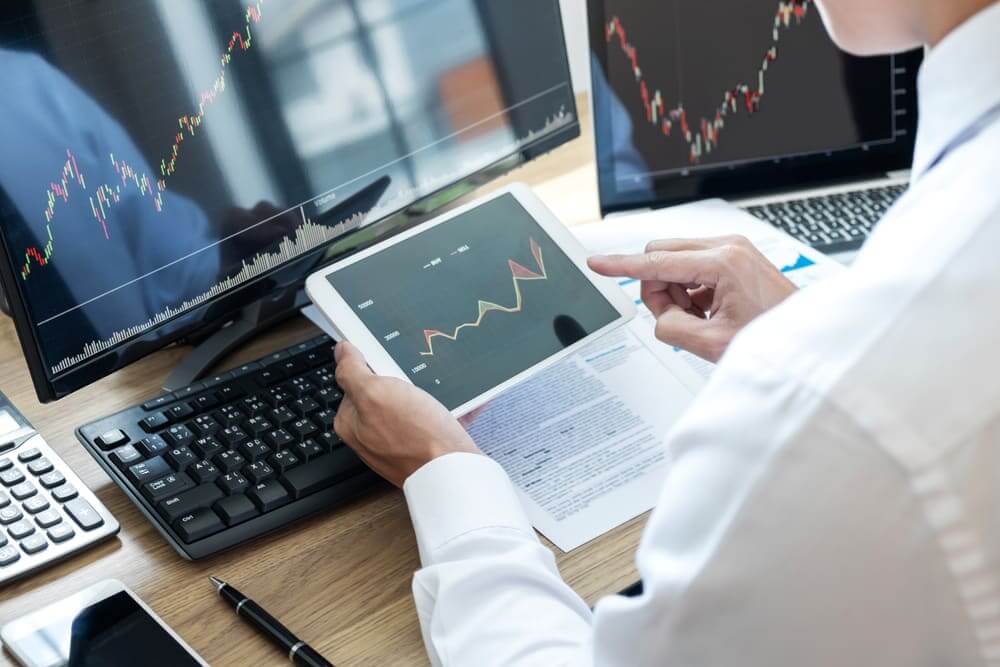
What are the functions of the secondary market?
Key takeaways:
- Significance: The secondary market is crucial for trading securities post-primary issuance, enhancing financial market efficiency.
- Market Types: The main types include the Stock Market, ensuring regulatory compliance, and the OTC Market, promoting diversification.
- Dynamics: Securities change hands after primary offerings, boosting transparency and offering investment diversity.
- Diversification: It includes stocks, mutual funds, and bonds, aiding capital formation and risk management.
Have you ever considered the main functions of the secondary market? What does this market represent in the first place, and how to start trading in it the best? Traders and marketers should know that this is the market for buying and selling securities.
The secondary market is a crucial platform for trading securities after initial issuance in the primary market. The issuing entities first offer securities to the public in the primary market. The secondary market allows investors to trade with each other.
It enhances overall financial market liquidity and efficiency. In this article, we’ll explore the secondary market’s significance and mechanics, along with the functions of the Secondary market. Let’s start with the basics, shall we?
What is the secondary market exactly?
In the secondary market, investors and traders actively trade securities after their initial issuance in the primary market. This marketplace fosters peer-to-peer trading, promoting both price discovery and risk management.
This market has many investment opportunities, is transparent, helps in capital raising, and improves price discovery and market functionality.
Notable secondary markets encompass the stock market and over-the-counter exchanges.
Serving as a critical place for market participants
It is an important place for market participants, where fair trading and regulations protect investors’ confidence and ensure accurate asset valuation.
It also helps with exit plans and order processing, which are important for finding the right prices.
Keep in mind that market regulation ensures fair and transparent market practices within this dynamic secondary market.
Understanding the Secondary market better

As explained above, the secondary market is the place for exchanging securities. It serves as the platform where securities change hands among investors. Issuing companies initially offer securities in the primary market.
The secondary market, on the other hand, facilitates transactions between individual investors and traders.
When people think of the secondary market, they often picture the stock market, which includes prominent national exchanges such as:
- The New York Stock Exchange (NYSE)
- The NASDAQ.
In the primary market, issuing entities initially offer securities to the public.
What are the main types of Secondary Markets?
Here are the main types of the secondary market:
Stock Market
- The stock market operates through centralized exchanges where electronic trading of assets, especially stocks, occurs.
- Transactions adhere to regulations enforced by bodies like the SEC in the US, ensuring risk mitigation through compliance.
Over-the-counter (OTC) Market
The OTC market differs from centralized exchanges as it enables the trading of stocks, bonds, and other assets through broker-dealer networks.
- Assets trade directly without a formal exchange. OTC markets have different tiers, like OTCQX, OTCQB (Venture Market), and Pink Sheets.
These markets offer options for different assets, including smaller companies with less strict listing rules. This helps spread out risk and provides opportunities outside of big exchanges.
What is the Secondary market landscape like?
The secondary market landscape continually evolves with the introduction of new financial products.
Investors buy bundled mortgages to form Ginnie Mae pools, thus broadening the secondary mortgage markets.
How does this market function?

To understand the Secondary Market’s functions, consider this:
Investors trade securities, often referred to as the stock market, after their initial release in the primary market. These transactions earn the label “secondary” because they follow the initial offering.
A bank gives a mortgage to someone and then sells it to other companies like Fannie Mae in a second transaction.
Mutual funds and bonds – also in the Secondary Markets
In addition to stocks, Secondary markets facilitate the trading of other assets such as mutual funds and bonds, promoting portfolio diversification. The marketplace, including participants like Fannie Mae and Freddie Mac, contributes to capital formation.
It ensures efficient order execution, bolsters market depth, and enhances trading volume, benefiting shareholders.
Traders must know that Secondary markets are important for market integrity and reducing risks in securities trading.
Understanding the Importance of the Secondary Market
Market participants trade securities in the secondary market after their initial release in the primary market. It’s important in the financial system because it lets supply and demand set market prices.
This dynamic marketplace deals with various financial instruments and forms a core part of capital markets. It serves as a central hub for traders of all scales, welcoming both large and small investors to actively participate.
Investors need easy ways to carry out their investment plans, overseen by regulatory bodies such as the Financial Review Board.
Exploring the Functions of the Secondary Market
If you’re curious about the functions of the Secondary Market, one of its pivotal roles is ensuring investor liquidity.
The Secondary markets provide liquidity, encouraging investors to participate in the primary market, where their investments help companies grow.

It is also a crucial market in the finance field. Investors and traders can trade securities after they are initially issued in the primary market.
Investors conduct transactions
In this secondary market, investors conduct transactions with each other, creating a dynamic and essential component of the global financial ecosystem.
This system helps with secure transfers and improves market liquidity and efficiency.
Primary Market vs. Secondary Market: Main differences
The primary market introduces new shares and bonds. This is usually done through an IPO. It allows companies to raise money from investors. In addition, it helps in setting share prices and a timeline.
In contrast, the secondary market, with exchanges like BSE, NYSE, or NASDAQ, actively trades existing stocks. Investors buy and sell securities, which affects share prices based on supply and demand. Transaction costs and interest rates impact cash flow.
The primary market helps companies raise funds by selling securities. The secondary market trades existing securities. This affects share prices, cash flow, and transaction costs.
Bottom line
The secondary market is important for the financial system. It allows transactions, provides liquidity, and helps with exit strategies. Don’t confuse it with the primary market, where companies initially offer securities before making them available to the public.




